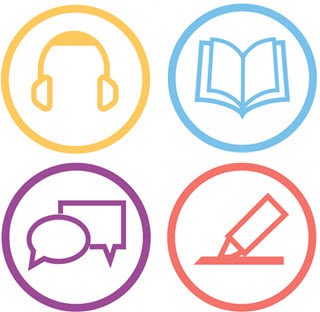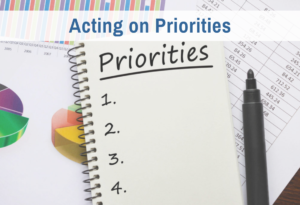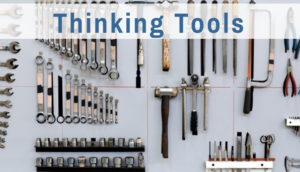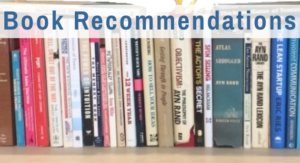In the age of streaming video and audiobooks, many people turn to listening as their primary way of learning new ideas. This has some cognitive risks that aren’t generally considered. If you are concerned with your operational intelligence, i.e., your ability to think and communicate effectively, here are some facts about how ideas get stored in and retrieved from memory that are worth considering.
Why reading sticks better than listening
This article was inspired by a conversation I had with a highly self-aware friend. She reported that she had gone back to reading books instead of listening to them as audiobooks.
Why?
Because she had noticed that she was losing her ability to express her ideas easily. The words weren’t coming up the way they used to. This kind of thing can be due to age, but she hypothesized it was due to lack of use. She is alone most of the day, working by herself, not talking. Listening was a bit passive. Switching back to reading required her effectively to name the words to herself as she went, which oiled the gears of recall and brought her speech capacity back to normal.
Why?
Because reading requires more intentional attention to comprehend than does listening. And intentional attention is what organizes your memory banks and makes it easier to recall.
When you’re listening, each sentence is intelligible without a lot of effort. But it takes extra effort to judge each thought and integrate as you go. This requires active listening, plus you need to stop the recording — or interrupt the person talking — in order to back up to make sure you’re getting it. This takes careful monitoring of your mental state, and it’s nearly impossible if you multi-task while listening.
In contrast, reading requires more intentional effort to comprehend each sentence as you’re reading. If you read the sentences passively, you eventually lose the train of thought. That is very noticeable because you feel confused. In contrast, active reading is both faster and easier than active listening. It is easy to stop and re-read, so there is less of a barrier to making sure that you comprehend. This is even more true if you need to go back more than a sentence or two. You can find a passage on the page more easily than you can by rewinding audio.
Why speaking sticks better than reading
If your eyes glaze over while you read, it means you need to increase your intentional attention a little bit. The next level up is reading aloud. When you read aloud, you not only need to parse the meaning of the sentence, you need to speak with the appropriate intonations to convey the meaning.
If you’ve ever read a text aloud, you know that sometimes you get a loud “stop! does not compute!” signal. You need to stop and go back and restart the sentence because your emphasis was all wrong. You catch that just by noticing the disconnect between what you’ve said and what you’re reading.
I used the benefits of speaking the other day when I was having trouble settling into work on my book. I’d had a two-week hiatus since drafting a synopsis of the first section. I knew I needed to warm up my memory banks to pick up where I left off, but I kept getting distracted as I read the synopsis. I could not get my head around the material.
What did I do? I switched to reading the synopsis aloud. This required more attention, which meant I stopped getting distracted, and I quickly got back into the material and excited about moving forward.
In order to make new mental connections, you first need to activate the information that will be connected. You cannot be creative when you are blank. But how do you warm up your existing knowledge? You need some way to do that systematically, and if listening or reading don’t work, speaking the material is the next option to turn to.
Why writing sticks better than listening or reading
If you really want to dig into something and learn it deeply, making many new connections, then do what Maria Montessori had her teachers do: Write out the material longhand. She literally had her teachers create their own manuals this way. This is one way they made the concepts and tools their own.
I currently have a daily practice of writing out one paragraph (or sometimes a sentence) from “Galt’s Speech” and then writing a few comments on it, all in longhand. I’m noticing things I never noticed in the previous dozen times I’ve read the speech.
Similarly, if you are listening to audio, take longhand notes in full sentences. If you can’t keep up or don’t know how to finish the sentence, you know that you are not quite getting it and can stop and replay the recording.
Is writing more active than speaking? Yes, for the same reason that writing is more active than listening. Because you control the rate of the material, you can monitor more easily and make sure you are understanding it. When you’re speaking, you need to stop to capture new integrations, which derails your train of thought. When you’re writing, the pen and paper are right there to record the new ideas, and the previous words are there to go back to, so you can pick up your train of thought very easily.
There are many benefits to writing things out. As you may know, I am on a mission to teach everyone who comes my way to “think on paper.” If you haven’t been introduced to this critical tactic, get my free Thinking Directions Starter Kit, which includes both an article and a recording on this crucial skill. In that article, I make the cognitive case for getting the ideas out in full sentences on paper.
Does it matter if writing is typed or longhand?
Digital natives take note: Typing is not as effective as longhand writing for storing ideas in memory. Typing is better than just reading or listening, but not as effective as longhand.
Longhand writing slows you down. It requires that you pay extra attention to write out the text and make it legible. Many people find it makes what you write feel more personal and important. Handwriting also integrates the ideas with motor memory in a much more complex way than does typing. Your emotions are captured with the handwriting, not just in the words.
However, longhand writing is completely impractical unless it is cursive. I think it’s a tragedy that cursive writing is no longer taught to many American children and even to some Canadians. Other countries, including the UK, have not fallen for this fad, which I hope will be reversed soon. If you don’t know how to write cursive, I recommend you teach yourself, and practice daily in a journal, so that you add this extra capability for learning to your arsenal.
Your mind is the means whereby you pursue all of your other values; it is worth nurturing. I take these observations seriously, and I hope you will, too. Just the other day, I realized I needed to edit my daily planning sheets to omit some reminders I had been reading each day to myself:
- Orient to values
- No dysfunctional states
- Have your own back
Now I write these same reminders out longhand — every morning — because then I remember them all day.








0 Comments